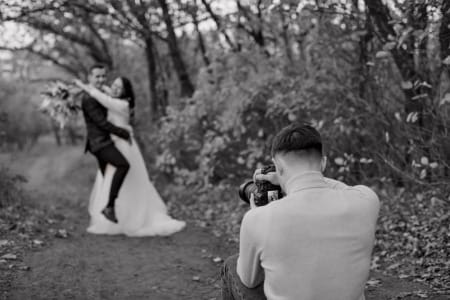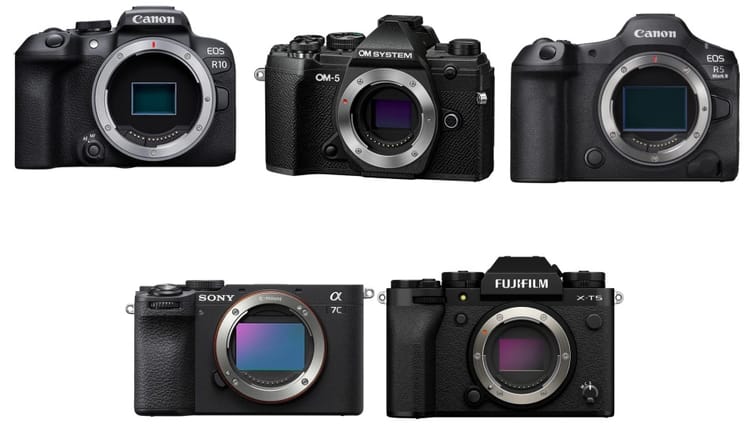10 Essential Steps on How to Start a Photography Business from Scratch

Introduction
Starting a photography business can be both exhilarating and daunting, especially in today’s competitive landscape. Many photographers dream of transforming their passion into a profitable venture, but knowing where to begin can be overwhelming. From managing creative work to handling administrative responsibilities, building a business requires a strong blend of artistic skill and business acumen. If you’re wondering how to start a photography business, the key is breaking down the process into clear, manageable steps.
In this guide, we’ll walk through the essential steps to help you start your photography business from scratch. From finding your niche and refining your style to setting up a solid marketing plan, each step is designed to build a sturdy foundation for long-term success. Understanding these steps not only prepares you for the practical aspects of running a business but also gives you the confidence to compete in the marketplace. Whether you’re a budding photographer or a seasoned artist ready to go professional, these steps will guide you toward a rewarding career in photography.
Affiliate Disclaimer
This blog post may include links to affiliate sites. If you click on an affiliate link and make a purchase, we may earn a small commission or receive other compensation at no extra cost to you. Please note that many of the links on our site are affiliate links. Our use of these links does not impact the products, services, or websites we recommend to you. This disclaimer covers all forms of communication with you, including our website, email, phone, social media, products, and other platforms.
Step 1: Define Your Photography Niche
When learning how to start a photography business, one of the first and most critical steps is to identify and define your photography niche. Your niche not only sets the direction of your business but also shapes your brand, marketing strategies, and even the type of clients you attract. Having a clear niche helps you stand out in a saturated market, allowing you to specialize in areas that resonate with both your skills and interests.
Why Choosing a Niche is Important
Defining a niche isn’t just about focusing on one type of photography; it’s about building expertise and becoming recognized in a specific area. When clients see that you specialize in a niche like wedding, portrait, commercial, or lifestyle photography, they feel more confident hiring you because they believe you’ll have both the knowledge and experience to meet their needs. By choosing a niche, you position yourself as an expert in a particular field, which can set you apart from generalist photographers and lead to more referrals and loyal clients.
Popular Photography Niches to Consider
· Wedding Photography: Known for high demand, wedding photography requires technical skill and an ability to capture emotion. It’s a niche with potential for growth but requires strong people skills.

· Portrait Photography: Often focused on families, children, and individual portraits, this niche can be more flexible and offers opportunities for repeat clients.
· Commercial Photography: Involves product, food, and corporate photography. This niche often attracts businesses and brands, leading to more consistent income.
By choosing a niche early on, you’ll streamline your marketing efforts and simplify how you present your work. When considering how to start a photography business, focusing on a niche can save you time, help you refine your portfolio, and allow you to connect better with clients who value specialized expertise.
Step 2: Develop Your Skills and Style
Once you've chosen your niche, the next step in how to start a photography business is to refine your skills and develop a unique style that resonates with potential clients. The quality of your work and your distinctive approach to photography are essential in a competitive market. Building technical expertise in photography goes hand in hand with cultivating an artistic vision, making your work instantly recognizable and desirable to clients within your niche.
Honing Your Technical Skills
Technical skill is the foundation of any successful photography business. Understanding the principles of exposure, lighting, composition, and post-processing is crucial for producing high-quality images. For those serious about mastering the craft, investing in workshops, online courses, and hands-on practice can provide structured learning and feedback. Many aspiring photographers start by shadowing seasoned professionals, working as assistants, or participating in local events to gain experience. Continuous learning and practice are essential, especially if your chosen niche requires specialized skills, such as low-light shooting for weddings or high-speed captures for sports photography.

Defining Your Unique Style
In addition to technical skills, developing a unique style helps differentiate your work and brand. Clients are often drawn to a photographer's style as much as they are to the photographer’s skill. Your style could emerge from your choice of color palettes, compositions, editing techniques, or even the emotions you aim to evoke in your images. Reviewing and refining your portfolio can help you understand what resonates most with your target audience and what makes your work distinctive.
When considering how to start a photography business, remember that both skill and style are crucial for success. By continually improving your abilities and creating a signature style, you’ll not only attract clients but also build a brand identity that makes your business memorable and credible in the industry.
Step 3: Create a Business Plan
Creating a solid business plan is one of the most crucial steps in how to start a photography business, as it serves as a roadmap to guide your business decisions and growth. A well-thought-out business plan not only helps you clarify your vision and goals but also lays out actionable steps for achieving them. This plan is essential if you intend to seek funding or simply want to stay organized and focused as you build your business from scratch.
Setting Your Business Goals and Vision
Start by defining what you want to achieve with your photography business. Are you aiming to work full-time, or are you starting with a part-time side hustle? Setting clear short-term and long-term goals, like booking your first client, growing a social media following, or opening a studio, will keep you on track and motivated. Your vision statement should outline the purpose of your business and what sets you apart from others in your niche. A clear vision helps guide your brand identity and marketing strategy, enabling you to build a business that aligns with your passion and strengths.

Key Elements of a Photography Business Plan
A business plan for a photography business typically includes sections on market research, target audience, pricing strategy, services offered, and marketing tactics. Conduct market research to understand your competition and identify the needs and preferences of your target audience. Define your ideal client so you can tailor your services and marketing to meet their expectations. A pricing strategy is essential, as it helps ensure profitability while remaining competitive. Include any start-up costs, such as equipment, website development, and legal fees, so you can budget effectively.
When learning how to start a photography business, having a clear and structured business plan is invaluable. It not only clarifies the steps you need to take but also boosts your confidence and readiness to launch. This plan will serve as a reference to guide your progress, adjust your
Step 4: Invest in the Right Equipment
A crucial step in how to start a photography business is selecting the right equipment. Quality equipment can significantly impact the quality of your work, client satisfaction, and the overall image of your business. However, starting a photography business doesn’t mean you need the most expensive gear from the outset. Understanding what equipment is essential for your niche and choosing gear that matches your current needs and budget will set a solid foundation without breaking the bank.
Essential Equipment for New Photographers
At a minimum, you’ll need a camera that delivers professional-quality images, which usually means investing in a DSLR or mirrorless camera body with high resolution and good low-light performance. Your choice of lenses will depend on your niche; for example, portrait photographers often use 50mm or 85mm prime lenses for sharpness and depth of field, while landscape photographers may prefer wide-angle lenses to capture vast scenes. Other essential gear includes a sturdy tripod for stability, especially for low-light or long-exposure shots, and a reliable external flash to control lighting.
Budgeting and Scaling Your Investment
When thinking about how to start a photography business, it's wise to start with equipment that meets your immediate needs and then expand as your business grows. Rather than buying everything at once, prioritize essentials and consider renting high-end or specialized equipment for specific projects. In addition, basic editing software like Adobe Lightroom or Photoshop is vital for post-processing, as it allows you to perfect images and create a cohesive look across your portfolio.
Additional Accessories for Professional Results
Alongside core equipment, investing in accessories like backup memory cards, batteries, and a protective camera bag is essential for efficiency and reliability on shoots. Reflectors, diffusers, and light modifiers are also valuable, especially for portrait or product photography, as they help you control lighting to achieve polished results.
Investing in the right equipment is a foundational step in how to start a photography business effectively. By choosing quality gear that suits your niche and budget, you’ll be well-equipped to handle various client demands and deliver professional results that will build your reputation and help grow your business.
Step 5: Set Up a Legal Business Structure
Establishing a legal foundation is a critical step in how to start a photography business that often gets overlooked. Setting up the right business structure not only provides legitimacy but also protects your personal assets and allows you to operate professionally. Depending on your goals, you might choose a sole proprietorship, LLC, or other business entity. Each structure has its own benefits, tax implications, and levels of liability protection, so understanding these options will help you make an informed decision.
Choosing the Right Business Structure
For many photographers starting out, a sole proprietorship can be a simple, cost-effective option, especially for freelancers. However, if you’re planning to grow your business or work with larger clients, forming an LLC (Limited Liability Company) may be a better choice, as it provides personal liability protection, which means your personal assets are separate from your business liabilities. An LLC also allows for flexible taxation, which can benefit you financially as your business expands. Consulting with a legal or financial advisor can be helpful to understand the best structure for your business model and goals.
Registering Your Business and Obtaining Permits
Once you've decided on a structure, the next step in how to start a photography business legally is to register it with your local government. This may involve filing a "Doing Business As" (DBA) name if you plan to operate under a unique business name. You may also need specific licenses or permits depending on your location, particularly if you’re planning to operate a physical studio. Some cities and counties require business licenses for home-based businesses as well, so researching local regulations is essential.
Insurance and Liability Protection
Insurance is another critical component of a legal photography business. General liability insurance protects you from potential lawsuits, such as if a client gets injured on a photoshoot. Professional liability insurance (also called errors and omissions insurance) covers issues related to the quality of your work, like a missed deadline or image loss. Having insurance safeguards both your business and your client’s interests, reinforcing your professionalism.
Setting up a legal structure is a key step in how to start a photography business responsibly and sustainably. By establishing a proper business entity, securing permits, and obtaining insurance, you’re setting a professional foundation that allows you to focus on creativity while minimizing potential risks.
Step 6: Build a Professional Portfolio
Building a strong portfolio is an essential step in how to start a photography business, as it showcases your skills, style, and the types of work clients can expect from you. A well-curated portfolio not only helps attract clients but also sets the foundation for your brand, acting as a visual resume that communicates your expertise. If you’re just starting out, there are various ways to create an impressive portfolio, even if you haven’t yet worked with paying clients.

Selecting Your Best Work
Your portfolio should include only your best work that reflects your niche and style. Quality over quantity is key here—clients often make decisions based on just a few impactful images rather than an extensive collection. Choose images that demonstrate a range of skills, from composition and lighting to storytelling. Aim to include a variety of shots that align with your niche; for example, if you specialize in wedding photography, include photos that capture different moments like ceremonies, details, and candid emotions. Consistency is also important, as it shows potential clients what they can expect when hiring you.

Building a Portfolio Without Clients
If you’re wondering how to start a photography business with little to no previous work, consider collaborating with friends, family, or other creatives for portfolio projects. Many photographers also volunteer their services to local events or nonprofit organizations in exchange for portfolio content and experience. Styled shoots, where you plan and execute a themed shoot with other local vendors, are another popular option to build relevant content that aligns with your target market.
Presenting Your Portfolio Online
Once your portfolio is ready, showcase it online to maximize visibility. A dedicated website is ideal, as it allows you to present your work professionally, including portfolio galleries, an about page, and contact information. Additionally, utilize social media platforms like Instagram to share your portfolio and reach a broader audience. Regularly updating your portfolio and online presence ensures potential clients see your latest and best work.
Building a professional portfolio is fundamental in how to start a photography business successfully. By curating high-quality images that highlight your skills and style, you establish credibility and attract clients who resonate with your creative vision.
Step 7: Develop Your Pricing Strategy
Creating a well-thought-out pricing strategy is essential in how to start a photography business that is profitable and sustainable. Pricing can be one of the most challenging aspects for new photographers, as it requires balancing what clients are willing to pay with the need to cover expenses and generate a reasonable income. Having a clear, structured pricing strategy not only ensures profitability but also helps convey your value to potential clients.
Calculating Your Costs and Setting Profitable Rates
Begin by calculating your business costs, which include both direct and indirect expenses. Direct costs might include equipment, editing software, and travel expenses, while indirect costs cover items like website maintenance, marketing, and insurance. Don’t forget to account for your time—consider how long each shoot, editing session, and client meeting takes to ensure your pricing reflects fair compensation for your work. With these numbers, you can calculate a base rate that covers all your expenses, allowing you to set a profitable starting point for pricing.

Understanding Market Rates in Your Niche
Researching market rates is an important part of how to start a photography business, as it helps you stay competitive. Investigate what photographers in your niche and location charge for similar services. For instance, wedding photography typically has a higher rate than portrait sessions due to the time commitment and skill involved. However, pricing too low to compete with established professionals can undervalue your work and lead to burnout. Instead, aim to position your prices at a sustainable level while highlighting your unique strengths.
Creating Pricing Packages
To simplify the decision-making process for clients, consider offering tiered pricing packages. For example, a basic package might include a short session with a set number of digital images, while a premium package could include extended shooting time, prints, and additional edits. Clear, well-organized packages make it easier for clients to understand your services and the value they offer, ultimately leading to higher satisfaction and booking rates.
Developing a pricing strategy is a key step in how to start a photography business effectively. By understanding your costs, researching market rates, and offering packages, you establish a fair and profitable pricing structure that supports both your business goals and clients’ needs.
Step 8: Create a Strong Online Presence
Building a strong online presence is a foundational step in how to start a photography business, as it allows you to showcase your portfolio, reach potential clients, and establish credibility. In today’s digital age, most clients begin their search for a photographer online, so having a well-crafted website and active social media profiles can significantly increase your visibility and booking potential.
Designing a Professional Website
A professional website is essential for creating a positive first impression. Your website should serve as a one-stop destination where clients can learn about your services, view your portfolio, and contact you. Key elements include an “About” page that introduces you and your business, a gallery that highlights your best work, and a contact form to make it easy for clients to reach out. Consider including client testimonials to build trust and a blog to showcase recent projects or photography tips, which can improve your website’s search engine ranking. A visually appealing, mobile-friendly design is crucial, as many clients may browse your site on their phones.
Utilizing Social Media Platforms
Social media is an invaluable tool in how to start a photography business and connect with potential clients. Platforms like Instagram, Facebook, and Pinterest allow you to share your work, engage with followers, and grow your brand organically. On Instagram, for instance, you can showcase your portfolio in a visually appealing way while using hashtags to reach your target audience. Facebook provides opportunities for sharing client reviews, event posts, and direct communication. Pinterest, especially popular for wedding and lifestyle photographers, can drive traffic to your website through pins of your work.

Engaging with Your Audience
Building an online presence isn’t just about posting content; it’s about engaging with your audience. Respond to comments, answer messages promptly, and encourage followers to interact with your posts. This interaction builds relationships and trust, increasing the likelihood that followers will eventually become clients.
A strong online presence is a key component in how to start a photography business successfully. By creating a professional website, utilizing social media, and actively engaging with your audience, you lay the groundwork for attracting and retaining clients in a competitive market.
Step 9: Market Your Photography Business
Marketing is essential in how to start a photography business that thrives, as it helps you reach potential clients, build brand awareness, and establish a consistent client base. Effective marketing strategies enable you to stand out in a competitive industry by communicating the unique value your business offers. With various marketing tools and channels available, a targeted approach can help you maximize results without overwhelming your budget.
Using Social Media Marketing
Social media platforms like Instagram, Facebook, and LinkedIn are powerful tools for promoting your photography business. Instagram is particularly valuable for photographers, as it allows you to showcase your portfolio visually and connect with followers through engaging posts, stories, and reels. Facebook provides a versatile platform to create event pages, share client testimonials, and run targeted ads. LinkedIn is ideal for commercial photographers looking to connect with businesses and professionals. Social media marketing works best with a consistent posting schedule and quality content that reflects your brand so potential clients get a clear sense of your work.
Leveraging Local SEO and Google My Business
For photographers, local clients are often the primary target audience, making local SEO (Search Engine Optimization) essential. Registering your business with Google My Business ensures your photography services appear in local searches, particularly when clients search for terms like “wedding photographer near me.” Optimizing your website with location-specific keywords and setting up profiles on local business directories can also boost your search ranking, making it easier for clients to find you.
Building Word-of-Mouth and Referrals
Referrals and word-of-mouth are highly effective in how to start a photography business that grows sustainably. Satisfied clients are likely to refer you to friends and family, so encouraging testimonials and reviews on your website and social media platforms can increase credibility. Consider offering incentives, like a discount on future sessions for clients who refer new customers, as this encourages a steady stream of referrals.
Marketing your business strategically through social media, local SEO, and referrals creates a solid foundation for attracting new clients and growing your brand visibility in a competitive market.
Step 10: Manage Your Finances and Grow Your Business
Proper financial management is a critical step in how to start a photography business that is sustainable and profitable. Knowing how to handle your finances effectively allows you to cover your costs, invest in growth, and avoid financial pitfalls that can hinder your success. From tracking expenses to reinvesting in new equipment or marketing, a solid financial plan will support you in building a strong, resilient business.
Setting Up Financial Tracking and Budgeting
One of the first financial tasks when starting a photography business is setting up a reliable system for tracking income and expenses. Consider using accounting software like QuickBooks or FreshBooks to manage your finances efficiently. With such tools, you can easily categorize expenses, send invoices, and monitor your cash flow. Budgeting is equally important—calculate expected costs for equipment, marketing, and day-to-day expenses to ensure you aren’t spending more than your income. A clear budget helps prevent overspending and enables you to make informed financial decisions as you grow.
Understanding Taxes and Setting Aside Savings
In how to start a photography business, understanding tax obligations is essential to avoid surprises. Set aside a portion of your income for taxes, including self-employment tax, to ensure you’re prepared when tax season arrives. Many photographers find it helpful to open a separate business bank account to keep personal and business finances separate. Consulting with a tax professional or accountant familiar with photography businesses can also provide valuable insights into deductions and tax-saving strategies.
Reinvesting in Growth Opportunities
Once you have a steady flow of clients, reinvesting in your business helps you maintain competitiveness. Consider allocating part of your profits toward new equipment, advanced training, or targeted marketing to attract higher-paying clients. Diversifying your services, like offering specialized sessions or adding prints to packages, can also help increase revenue. Continuous investment in your skills, tools, and marketing strengthens your business’s foundation and reputation.
Managing finances effectively is a key part of how to start a photography business that lasts. By tracking income and expenses, planning for taxes, and reinvesting strategically, you’ll not only keep your business on a sound financial footing but also set the stage for sustainable growth and success in the long term.
Conclusion
Starting a photography business can be a rewarding journey that transforms your passion into a profitable venture, but it requires careful planning and dedication. Each step in how to start a photography business—from defining your niche and building your skills to managing finances and creating an online presence—contributes to a solid foundation for growth and success. It’s essential to approach the process one step at a time, focusing on building your brand, refining your skills, and connecting with potential clients in ways that showcase your unique value.
Remember, success in photography comes not just from technical expertise but also from understanding how to run a business, market yourself, and build relationships with clients. As you grow, be open to adapting and reinvesting in your skills, tools, and services to stay competitive. By following these steps, you’re setting yourself up to thrive in an industry where creativity and business acumen go hand in hand. With commitment and a clear strategy, your photography business can become a fulfilling and sustainable career path.
Thank you for visiting our site and being part of this journey with us! We rely on the generous support of visitors like you to continue providing high-quality. Your donation, no matter the size, helps us maintain the website and create more valuable resources for everyone.





